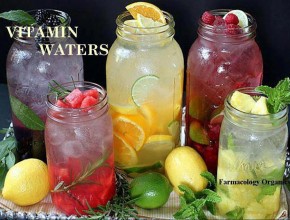Healthy Tips
Gabrielle Van Tassel June 09, 2017
FoodHealth
In an effort to eat healthier and more ethically, I tend to gravitate towards foods that are organic, non-GMO, and locally grown—hence the $8 eggs I accidentally bought last week. Have you ever stopped to wonder what those phrases and certifications on food labels actually mean? Remember when Naked got in trouble for falsely advertising their juice as containing quality, healthful ingredients? And when we found out the truth behind food labels like cage-free, antibiotic-free, and certified organic? These are examples of food fraud.
Food fraud is not just when companies fraudulently market their products as something they’re not. Dr. John Spink of Michigan State University’s Food Fraud Initiative defines food fraud as “a collective term used to encompass the deliberate and intentional substitution, addition, tampering, or misrepresentation of food, food ingredients, or food packaging; or false or misleading statements made about a product, for economic gain.” No matter how you spin it, food fraud is shady business.
But without a subscription to the The United States Pharmacopeial Convention food fraud database, how do you protect yourself against food fraud? The answer is, well, it’s hard. There are thousands of ingredients and food fraud records in the database. To help you out, I put together a fairly short list of common foods that you should always keep an eye on.
The most dangerous example of food counterfeiting is olive oil. Olive oil, especially extra virgin olive oil, is the healthiest oil we can eat. However, the hard truth is that according to a study conducted by the UC Davis Olive Center, only 69 percent of bottles labeled “extra virgin” are actually extra virgin. The harder truth is that manufacturers can cut it with vegetable, soybean, and sometimes a nut oil. That poses a severe health risk for some people with allergies.
Fish is another big source of food fraud. Oceana.org found that 39 percent of seafood in NYC alone was mislabeled. A lot of fancy fish you’re buying could actually be a cheap, bottom-feeding substitute like Escolar instead of Tuna steak. The danger is that Escolar contains indigestible esters that can cause food poisoning and other shitty side effects (pun intended).
As for ground meat, you might be getting a mystery animal in your marked package. Remember the horse meat scandal in England? Lucky for the US, meat substitution is not as common here.
Another upsetting one is milk. Never use powdered milk, especially if it’s from China. Worse than drinking a mix of various livestock milk (as in, not just cow), some powdered milks can contain chemicals like melamine, urea, and detergent.
Far less terrifying is the wide-spread fruit juice fraud. Beyond various companies claiming unproven health benefits on the labels, a lot of juice companies will claim the product is “100 percent juice.” The trouble is, that bottle of juice is probably 100 percent juice, but it’s not straight grapefruit, pomegranate, orange, or what have you. It’s probably cut with something cheap and sugary, like apple juice. Some juices even contain clouding agents to make them look “fresh squeezed.” No thanks.
You probably already knew about honey and food fraud, but it’s one of the worst offenders. Those plastic bears are loaded with additives like high fructose corn syrup, so just stick to your local apiaries.
Coffee is another common one because it’s easy to hide other brown things, like twigs, in coffee grounds. Ever wonder why your pre-ground coffee has a particularly earthy taste? Do yourself a favor and buy whole beans.
Ground black pepper is another easy way to dupe consumers, so buy whole peppercorns and a grinder and do it yourself. Freshly ground pepper tastes better anyways. The next thing you should be scrutinizing is your vanilla extract.
Vanilla is the second most expensive spice, so it’s not surprising that the extract is made up of vanillin instead. While vanillin is a naturally occurring compound, most commercially sold bottles of extract synthesize it in a lab for cheap.
Cinnamon is either made from the bark of Ceylon or Cassia. We’re more familiar with the cheaper, spicier Cassia, but either way it yields a fine, brown spice that is easily faked with coffee husks. So make sure you read the label.
Finally, the most predictable victim of food fraud is your bottle of wine. Fraudulent wine mostly comes from cheap wine being falsely labeled as something much nicer, and it has cost the US wine business about $250 million. So seek out your local wine purveyor or buy straight from a trusted vineyard.
Stay safe out there, and read labels carefully.
Every time you eat is an opportunity to nourish your body.
The problem is we are not eating real food any more…we are eating food-like products. How can you expect your body to last for a long and enjoyable lifetime if you don’t put the proper building blocks in there? Those who think they have no time for healthy eating will sooner or later have to find time for illness. A Few Examples: 1) If you keep nutritious food in your fridge, you’ll eat nutritious food. 2) If it came from a plant, EAT IT. If it was made in a plant, DONT. 3) Drink more water.
VITAMIN WATER RECIPES ~
Yes another post about water! But if you really want to cleanse, lose weight & feel better ~ then DRINK, DRINK, DRINK. Here are 8 home made vitamin water recipes. Make the waters up the night before and let set in t…he refrigerator over night. Most of these are good for 24 to 48 hours. You should drink one of a day and you can drink them in any order or just choose a favorite. It is all about the water intake.1)Spa Water ~ Cucumber & Herbs – Mix 10 cups of water, 1 cucumber & 1 lemon, thinly sliced add 1/4 cup fresh finely chopped basil leaf & 1/3 of finely chopped fresh mint leaves.2)Spring Blitz ~ Berry, Lime & Mint – Mix 10 cups of water, 7 strawberries / 0r Raspberries and one thinly sliced lime add 12 finely chopped fresh mint leaves.3) Good Digestion: ~Fennel & Citrus – Infuse 3/4 teaspoon of dried crushed fennel in 1 cup of boiling water for 5 minutes. Let set to room temperature. Mix 10 cups of water, the juice of one lemon juice, a small thinly sliced orange, 12 fresh chopped mint leaves and add the infusion of fennel seeds.4) Antioxidant ~ Blackberry & Sage – Mix 10 cups of water, 1 cup of blackberries that have been slightly crushed and 4 sage leaves.5) Summer Time ~ Watermelon & Rosemary – Mix 10 cups of water, 1 cup of watermelon cut into cubes add 2 fresh rosemary stems.6) Tropical Dreams ~ Pineapple & Mint – Mix 10 cups of water, 1 cup of pineapple cut into cubes add 12 finely chopped mint leaves7) Apple Delight ~ Apple & Cinnamon – Mix 10 cups of water, 1 cup of apple cut into cubes, whole 2 cinnamon sticks add 1 teaspoon of ground cinnamon8.)Spicy Ginger ~ Ginger & Green Tea – Make 2 cups of green tea add 1 teaspoon of ginger. Let cool. Mix 10 cups of water with the 2 cups of ginger and green tea, add a 3 inch slice of fresh ginger cut into cubes.
YOU ARE WHAT YOU EAT ~
As they say “You are what you eat.” So, is it possible to “eat” your way to a faster metabolism? According to “Healthy Living” it is! Try spicing things up! Capsaicin, a compound in chili peppers, might rev up metabolism by about 5 percent…, according to a study in the International Journal of Obesity. Allylisothiocyanate, a compound in spicy mustard, can give your body a temporary bump in metabolism, research has found. Trade the mayo on your turkey sandwich for spicy mustard, or add a tablespoon of mustard to homemade vinaigrette. Sprinkle crushed red pepper into spaghetti sauce, and add a teaspoon of chili powder to ground turkey for tacos.





